Abstract
The topography and the severity of the brain lesions induced in male and female white mice 1-6 weeks following inoculation with Toxoplasma gondii were studied by conventional histological and peroxidase-antiperoxidase (PAP) immunohistochemical techniques. The medulla oblongata and fourth ventricle were the most severely damaged areas of the brain, while the cerebellum was only minimally involved in this only in the later stages of the disease. Toxoplasma cysts were revealed by the PAP method as early as 2 weeks after infection. The number of cysts and the severity of the lesions increased gradually each week following inoculation. The lymphoplasmacytic element in the lesions was less intense in male than in female mice. The significance of these findings in respect to the possible immunological pathogenesis of CNS toxoplasmic changes is discussed. A correlation of the experimental findings with the known neurologic manifestations of the disease is also attempted. The advantage of the PAP method in the study of toxoplasmic infection is stressed.
Full text
PDF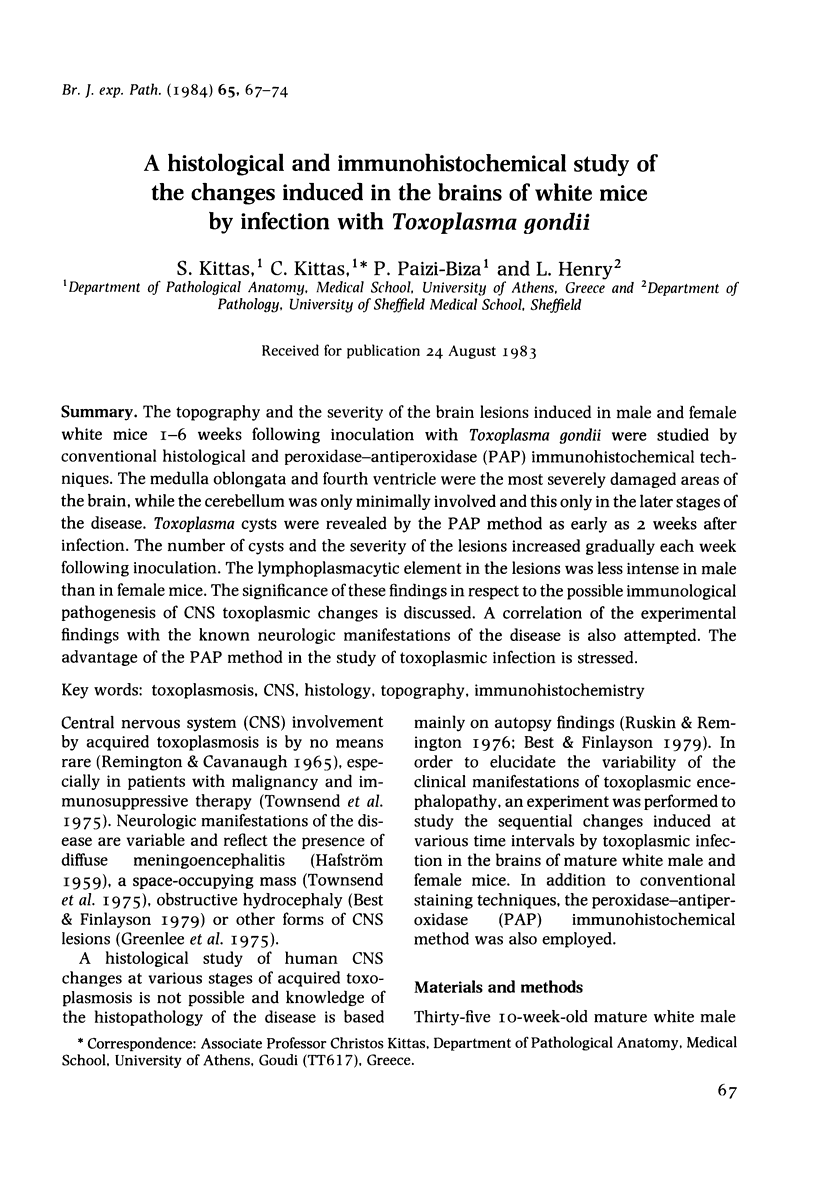
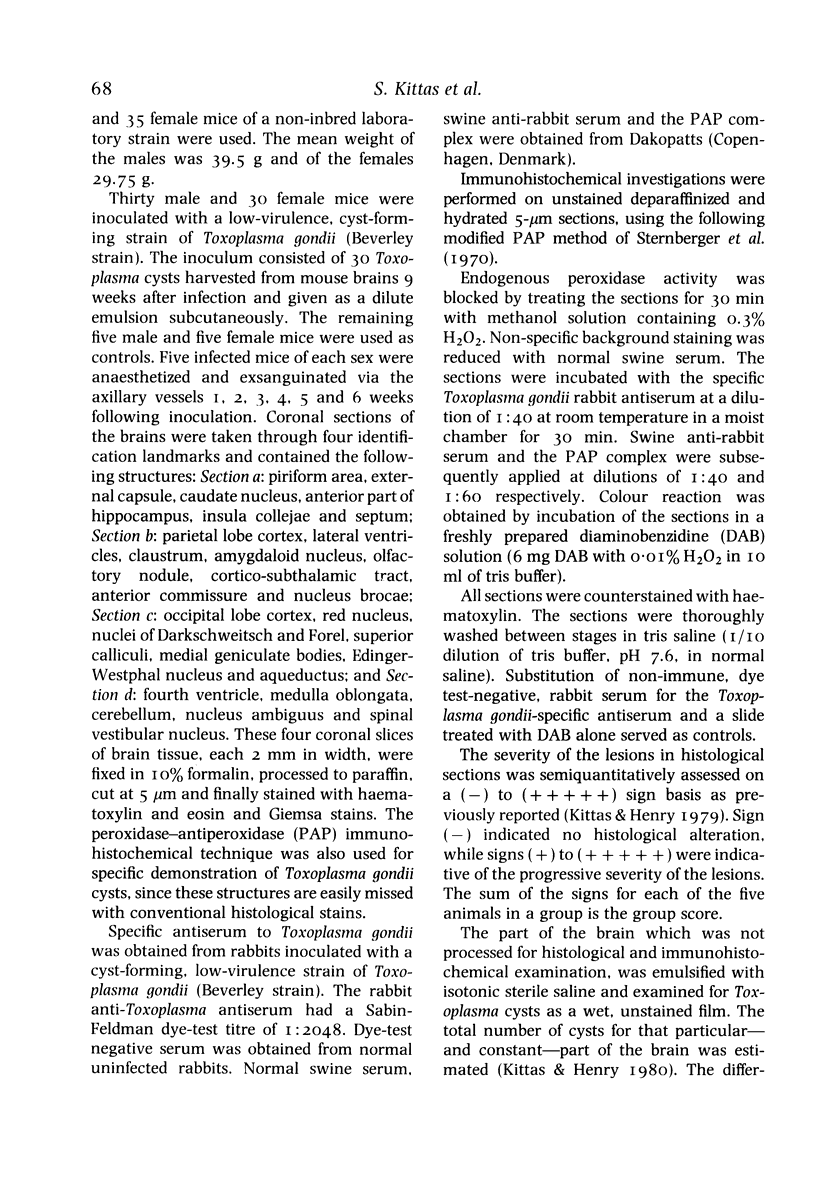
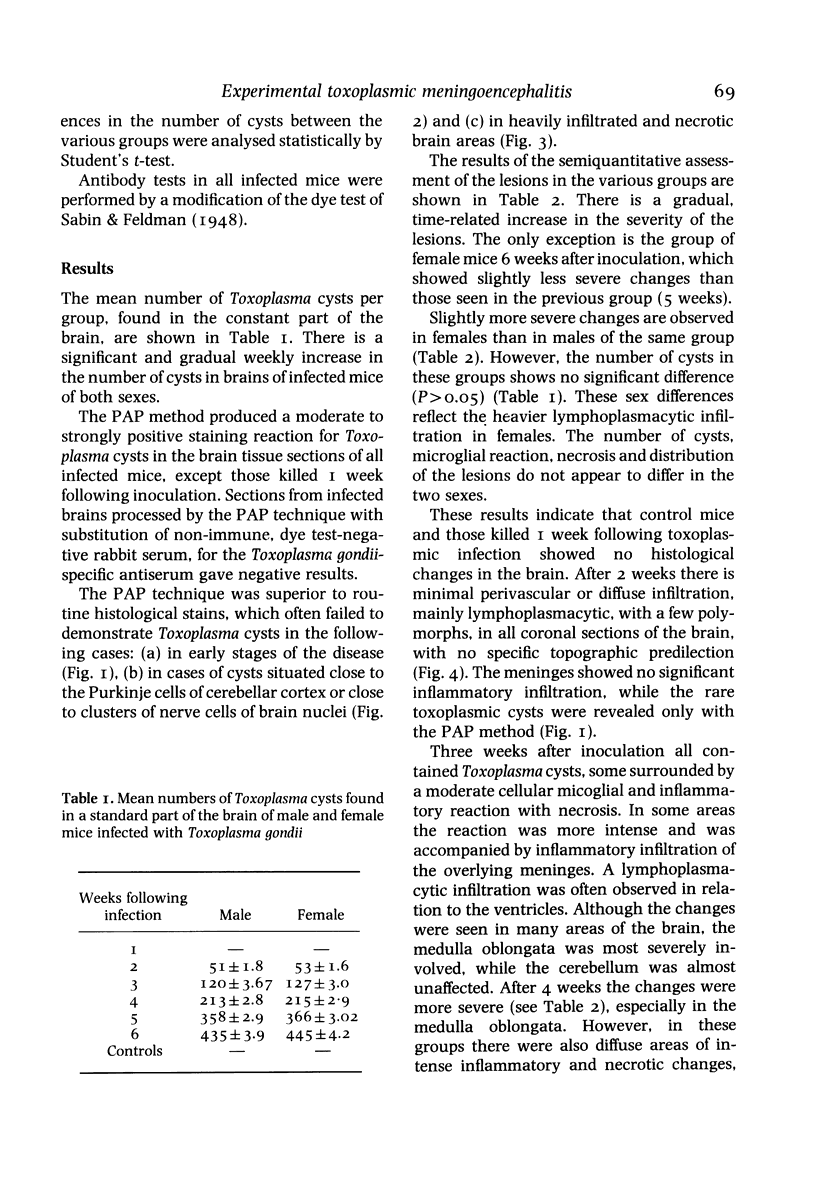



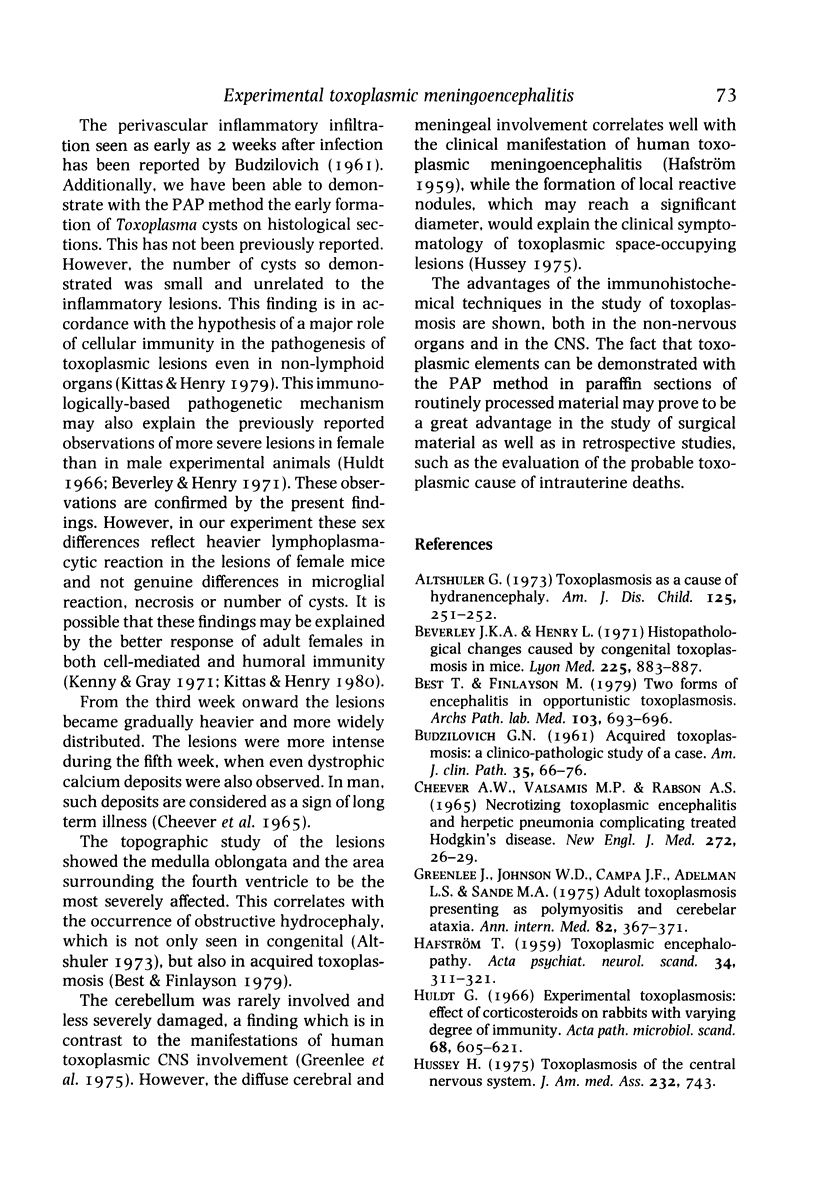
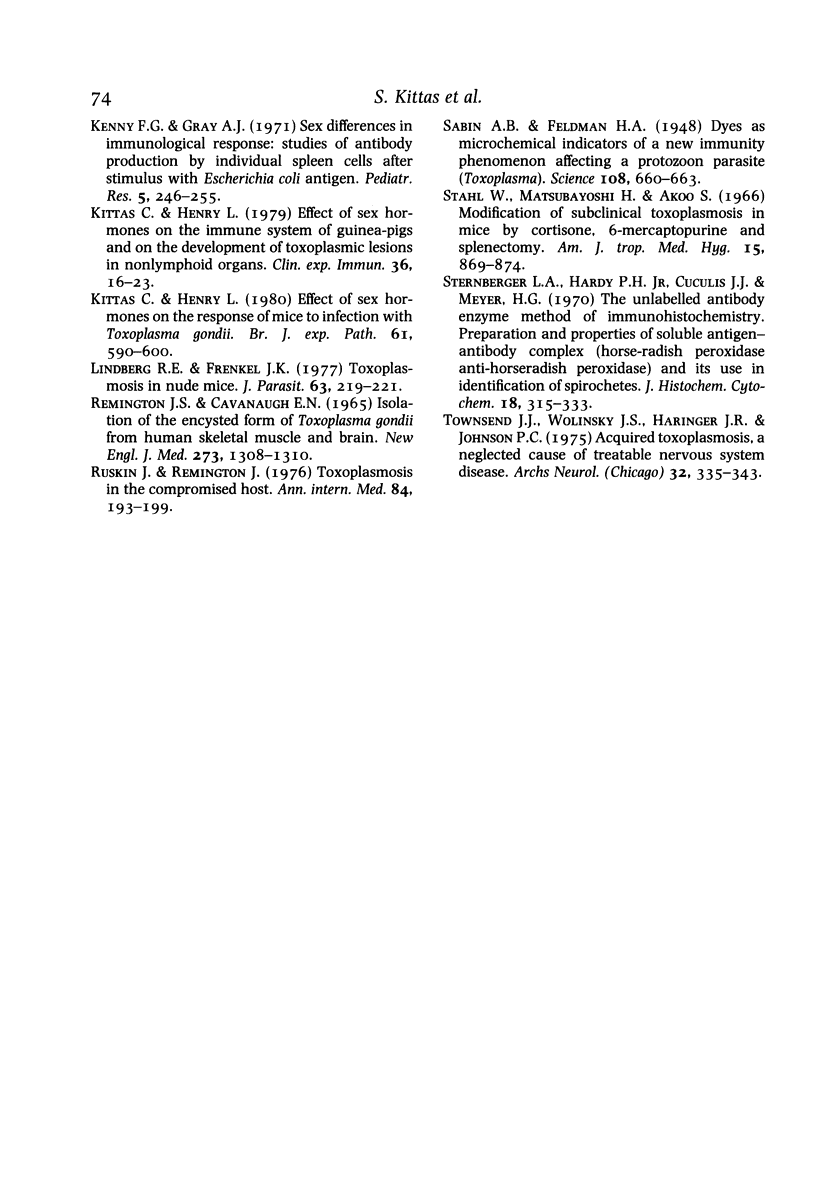
Images in this article
Selected References
These references are in PubMed. This may not be the complete list of references from this article.
- Beverley J. K., Henry L. Histopathological changes caused by congenital toxoplasmosis in mice. Lyon Med. 1971 May 9;225(9):883–887. [PubMed] [Google Scholar]
- CHEEVER A. W., VALSAMIS M. P., RABSON A. S. NECROTIZING TOXOPLASMIC ENCEPHALITIS AND HERPETIC PNEUMONIA COMPLICATING TREATED HODGKIN'S DISEASE. REPORT OF A CASE. N Engl J Med. 1965 Jan 7;272:26–29. doi: 10.1056/NEJM196501072720106. [DOI] [PubMed] [Google Scholar]
- HAFSTROM T. Toxoplasmic encephalopathy: a form of meningo-encephalomyelitis in adult toxoplasmosis. Acta Psychiatr Scand. 1959;34:311–321. doi: 10.1111/j.1600-0447.1959.tb07581.x. [DOI] [PubMed] [Google Scholar]
- Hussey H. H. Editorial: Toxoplasmosis of the central nervous system. JAMA. 1975 May 19;232(7):742–743. [PubMed] [Google Scholar]
- Lindberg R. E., Frenkel J. K. Toxoplasmosis in nude mice. J Parasitol. 1977 Apr;63(2):219–221. [PubMed] [Google Scholar]
- Ruskin J., Remington J. S. Toxoplasmosis in the compromised host. Ann Intern Med. 1976 Feb;84(2):193–199. doi: 10.7326/0003-4819-84-2-193. [DOI] [PubMed] [Google Scholar]
- Sabin A. B., Feldman H. A. Dyes as Microchemical Indicators of a New Immunity Phenomenon Affecting a Protozoon Parasite (Toxoplasma). Science. 1948 Dec 10;108(2815):660–663. doi: 10.1126/science.108.2815.660. [DOI] [PubMed] [Google Scholar]
- Sternberger L. A., Hardy P. H., Jr, Cuculis J. J., Meyer H. G. The unlabeled antibody enzyme method of immunohistochemistry: preparation and properties of soluble antigen-antibody complex (horseradish peroxidase-antihorseradish peroxidase) and its use in identification of spirochetes. J Histochem Cytochem. 1970 May;18(5):315–333. doi: 10.1177/18.5.315. [DOI] [PubMed] [Google Scholar]







